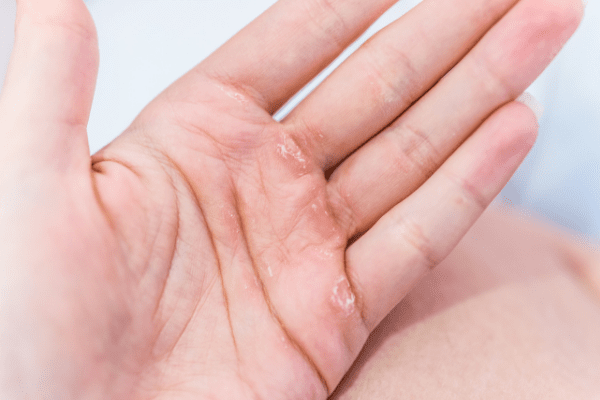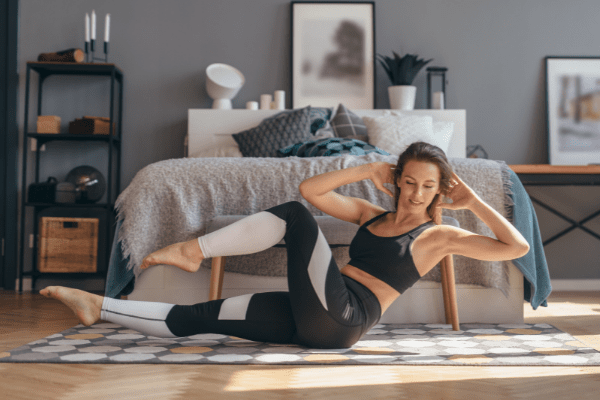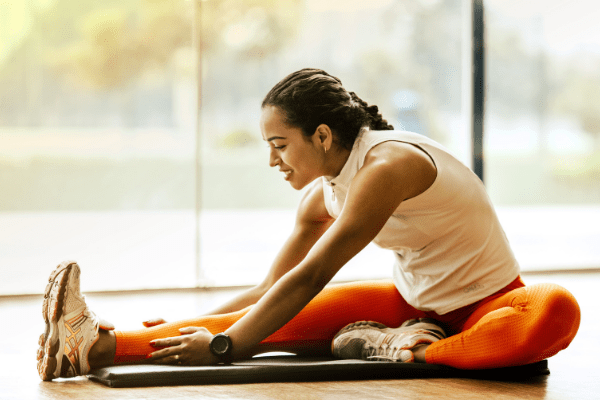
Rowing machine injuries can be quite common, but can also be quite easily avoided. Other gym equipment can be quite easy to use without worrying about learning a proper technique. However, using a rowing machine requires the proper form and technique to avoid injury.
If you are new to rowing, it would be worth taking a class on rowing or watching some online videos to ensure you have the proper form.
As a physiotherapist, I often see people with rowing injuries that can be easily prevented by following some simple tips and proper form.
The research shows that the most common causes of rowing machine injuries are caused by the volume of training as well as improper technique.
Lower back pain is one of the most common rowing machine injuries. It is most often caused by not using the proper rowing technique, or by poor posture while using the rowing machine.
A sudden increase in usage of the rowing machine can result in lower back pain or other injuries. Your body needs time to adjust to a new exercise, and if you do too much, too soon, you may acquire an unwanted injury.
Lower back pain after using the rowing machine can also be a sign of other underlying conditions such as disc herniation or disc degeneration. If your lower back persists, even after improving your form and posture, and by following the tips below, then it would be worth seeing your local physiotherapist for an assessment.
Patellofemoral (kneecap) pain is quite a common rowing machine injury. It presents as knee pain at the front of the knee with walking up and downstairs and can result in a clicking feeling while rowing.
Illiotibial band (ITB) pain is a knee pain on the outside of the knee. It is a fairly common injury with rowers as the knee is often in a slightly bent position which can irritate the ITB. ITB pain will present as inflammation and tenderness on the outside of the knee.
Knee pain can be increased if you are pairing a high-impact exercise such as running with your rowing machine training. Both of these can put extra stress on the hip and knee, resulting in patellofemoral knee pain or ITB pain. By modifying your activity and adding in some strength training, you can help these injuries to recover, and to help to prevent them from returning.
Shoulder impingement is a fairly common rowing machine injury. A shoulder injury is usually caused by overuse, trauma, or mechanical injury. In the case of rowing machine injury, it is usually due to overuse.
The way rowing machine strokes are performed can result in the space between the acromion and the rotator cuff of the shoulder becoming smaller and tighter. This can result in shoulder rotator cuff impingement.
The best way to treat this injury is to rest, and then do some rotator cuff strength exercises, as well as look at your rowing machine form to check your shoulder positioning.
Extensor tenosynovitis is a common wrist injury in rowers, particularly in the spring when training in colder weather. It often occurs due to the wrists and tendons being exposed to the cold. The symptoms are pain, inflammation around the wrist, as well as crepitus (creaking) within the tendon. You may notice the pain in the wrist with rowing, but also with other activities such as writing.
It can be prevented by warming up the wrists before you row and keeping them warm by wearing long-sleeved fleeces and tops to keep the wrist warm. You can treat it with rest, anti-inflammatory medication, and the use of a wrist splint.
Stress fractures of the ribs are common in rowers. This is due to the repetitive action of the arms and rib cage with rowing. The pain can initially start as chest pain but then progress to a much sharper rib stress fracture pain.
Rib rowing injuries can usually be prevented by not over-training with rowing, and by adding some cross-training to your weekly exercise routine.
Blisters on the hands can be very common with rowers - either rowing on the water or rowing on the machine. They can be very painful and can become infected if not treated right.
They can be caused by either gripping too hard on the handle, or from very high mileage. By learning to loosen your grip a bit, you can help to prevent the blisters from occurring. You can also wear gloves - as they can help to protect your hands from constant friction.
To prevent injuries from occurring, it is important to monitor your load - how much of a certain exercise you are doing. If you increase the amount of rowing you do too quickly, or you increase the intensity of your workouts too quickly - you can become injured.
By increasing your duration and intensity slowly over time, as well as cross-training with other exercises, such as cycling, swimming, running, or gym weight work, you can help to prevent injuries from happening.
It is important to have the correct equipment to help you to perform without injury. Using things like a comfortable seat cushion for your rowing machine can help to prevent lower back pain, and using gloves can help to prevent blisters.
Warming up your body before rowing can help to prevent injury, particularly if you are rowing outside on a colder day.
By doing dynamic movements, you can increase blood flow and this can help to get connective tissue, such as tendons and ligaments, moving better before exercising.
Stretching post-workout with sustained stretches can be shown to reduce the risk of injury. By helping your muscles to return to their previous length, stretching can aid with recovery and help to prevent any rowing injuries.
Listening to your body is important, and if you experience pain it is vital to assess this pain and stop if it feels painful. It is not good to push through sharp pain as this can make an injury worse, and can result in you needing to take even more time off from rowing and exercise.
If you experience pain while rowing, it is best to stop and if it persists, to see a health care professional such as a physiotherapist.
Rowing is a relatively low-risk sport, but it can result in injury generally due to over-training. If you are new to rowing or are increasing your training for an event, it is best to increase your rowing volume and intensity carefully and to include some cross-training into your schedule to help to prevent injury.




